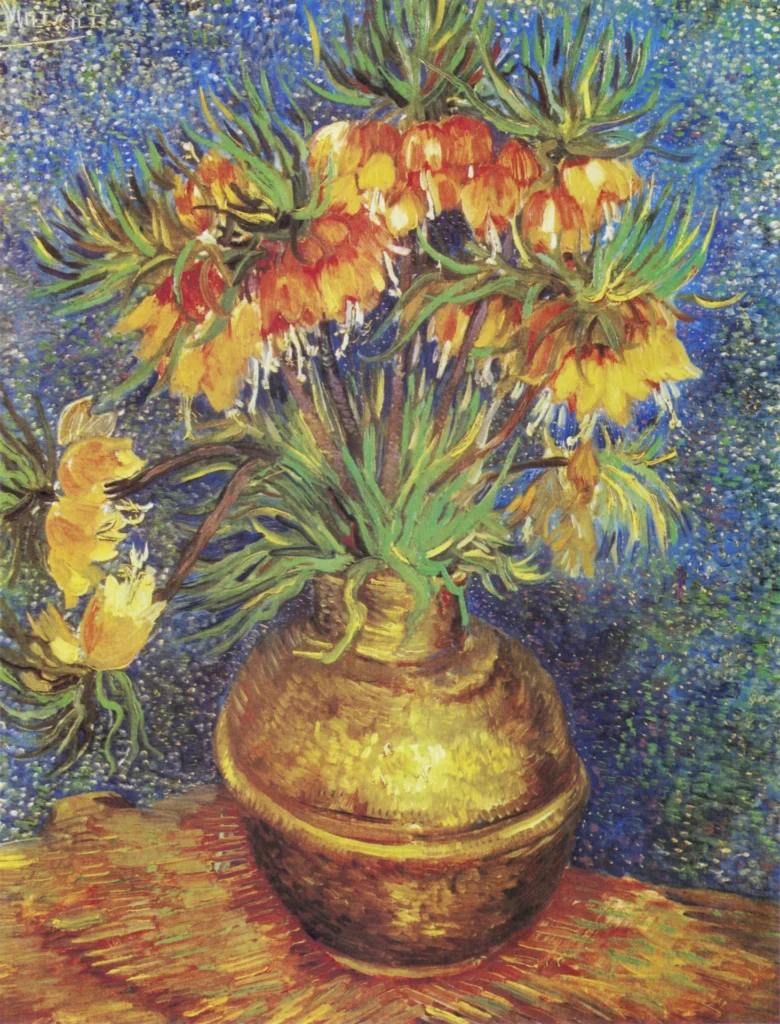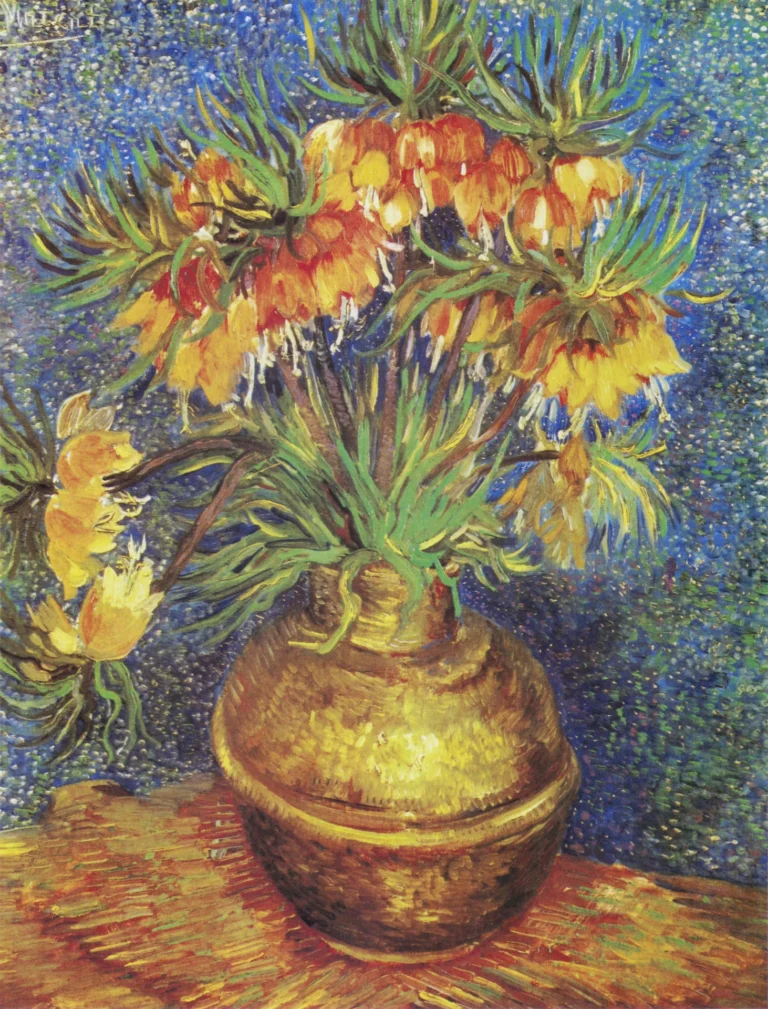Imperial Fritillaries In A Copper Vase (1887)
Vincent van Gogh's Imperial Fritillaries in a Copper Vase is a stunning examination of color and composition, showcasing a bouquet of imperial fritillaries in a glinting copper vase. Painted in 1887 during his Parisian period, this work reflects his innovative techniques and emotional resonance. Utilizing thick brushstrokes and a vivid color palette, Van Gogh melds Neo-Impressionist influences with his own expressive style, resulting in a piece that radiates joy and vibrancy.
Year 1887
About the Artwork
This painting was crafted while Van Gogh resided in Paris, a pivotal period that influenced both his technique and personal life. Surrounded by the vibrant art scene, he adopted aspects of Impressionism, incorporating pointillist techniques into his expressive style. Imperial Fritillaries in a Copper Vase thus stands out as an important work, both as a reflection of his artistic evolution and his emotional connection to his surroundings. Living with his brother Theo and infatuated with Agostina Segatori, Van Gogh poured his personal experiences into this piece, giving it a celebratory tone that encapsulates his spirit at the time.
Did You Know
The creation of Imperial Fritillaries in a Copper Vase coincided with Van Gogh’s romantic interest in Agostina Segatori, who owned the Tambourin café. This personal connection inspired him to create several floral paintings for the café, emphasizing the significance of the piece.
In this work, Van Gogh employed techniques influenced by Neo-Impressionism, including pointillist brushwork and complementary color schemes. His interactions with artist Paul Signac profoundly impacted his approach during this period.
The imperial fritillary, known for its striking orange-red hues, was a popular flower in 19th-century French and Dutch gardens. Van Gogh’s choice of this flower symbolizes both beauty and transience, encapsulating themes that recur in his artwork.










